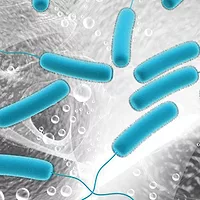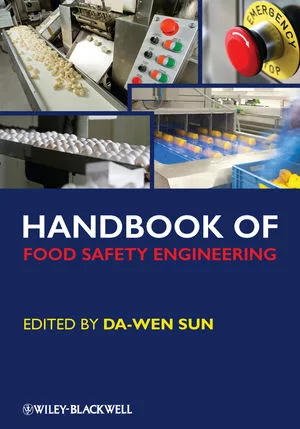Development of BRC-Compliant Cleaning and Disinfection Methods

The UK is a unique food market for two key reasons. First, a large proportion of its manufactured food products are ready-to-eat, preservative-free and with a shelf life of typically 3–10 days. This market in 2014 is estimated to be £11.4 billion[1] and is dependent on food hygiene systems to control pathogenic and spoilage microorganisms. Additionally, the market is heavily audited by food retailers, either via their own standards or via the Global Food Safety Initiative-compliant British Retail Consortium (BRC) Global Standards audit.[2] Cleaning and disinfection (sanitation) programs must therefore be effective at controlling (primarily microbiological) hazards and be audit compliant.
With all food production processes, both equipment and surfaces become contaminated with food residue, foreign bodies and bacteria. The removal and control of these contaminants is the process of sanitation. Cleaning and disinfection should always be considered an essential and integral part of the production process and a prerequisite of a Hazard Analysis and Critical Control Points (HACCP) system. All food manufacturers should have a company hygiene policy; included within this should be provisions for an effective approach to the hygiene management system. The cleaning and disinfection methods for the site must be developed using a Hazard Analysis approach. BRC and Retailer Codes of Practice require the food business to document this assessment, and the following 10 steps show the ideal path for the development of a cleaning and disinfection management program.
Step 1: Identify Hazards, Determine Objectives and Set the Standards Required
The first step for implementing a successful approach to cleaning and disinfection is to assess any hazards that must be controlled using a Hazard Analysis approach, such as HACCP. Such hazards could include:
• Spoilage microorganisms
• Pathogenic microorganisms
• Allergens
• Chemical residues
Cleaning programs may also have objectives related to maintaining subsequent product quality. Quality may be related to organoleptic issues such as the physical presence of the remnants of the previous product or the transfer of taint or color. The objectives may also be related to the separation of product categories such as “organic,” “GMO-free,” “religious” (e.g., halal), vegetarian or DNA speciation (e.g., pork residues in beef products).
Cleaning standards required by the manufacturer, customers, third-party auditors and legislation should be clearly identified, recorded and communicated to employees. The standards that need to be achieved on surfaces may include some or all of the following:
• Visual cleanliness
• Markers of total soil residues, such as protein or ATP
• Freedom from DNA speciation below a level of test kit detection
• Freedom from allergen residues below a level of test kit detection
• Chemical residue (pH, disinfectant maximum residual levels)
• Markers of generic microbiological contamination such as total viable count or Enterobacteriaceae
• Freedom from pathogens
Step 2: Evaluate Cleaning & Disinfection Requirements
When evaluating the cleaning and disinfection methods required for a food processing environment, the following aspects need to be considered:
• Standards required
• Type of food processing environment (low-, medium- or high-hygiene areas)
• Type of clean required (interim, daily, periodic)
• Type of soiling, including consideration of allergens and species
• Frequency of cleaning dependent on production needs
• Water chemistry and water temperature
• Equipment and processing environment hygienic design
• Equipment and processing environment sensitivity to cleaning (e.g., is it susceptible to water damage?) and cleaning chemicals (materials of construction)
• Product or environmental sensitivity to water (need for dry cleaning)
• Available cleaning time, human resources and cleaning equipment
• Requirement for engineering support (clean-in-place, ring main chemical delivery systems, centralized pressure-rinsing pumps, chemical dosing/application systems, etc.)
• Cross-contamination risk during cleaning
• Drainage/effluent/effluent treatment concerns
• Historical or current issues
• Operator safety
• Cost
Step 3: Define Cleaning & Disinfection Methods
Once an evaluation of cleaning and disinfection requirements has been made, the method for each type of clean can be defined and recorded. Five types of clean are recognized:
1. Production/cleaning handover – This details all activities required by production operatives, for example, removal of all residual product and packaging from the lines, prior to handing over to cleaning operatives to undertake the major sanitation tasks.
2. Interim – This details all activities required to keep the processing environment safe for production operatives during the production period and the specific clean required for food processing equipment between individual production runs.
3. End-of-production – This details all activities required to meet the cleaning objectives of the food processing equipment and environment at the end of the production period. This is traditionally the primary daily clean.
4. Periodic – This details the requirements for additional cleaning and disinfection, over and above end-of-production cleaning, which is undertaken periodically (weekly/monthly). This involves additional dismantling of equipment to expose difficult-to-reach areas or additional chemical cleaning (e.g., an acid rinse for mineral scales), the thermal decontamination of equipment or the decontamination of the processing area via chemical fogging or gaseous treatments.
5. Incident management – This details the strategy and tasks required to decontaminate (as much as technically feasible) the processing equipment and environment following a contamination incident (e.g., detection of Listeria monocytogenes in product) to allow subsequent production to commence.
Cleaning and disinfection methods can be classified at the room or area level, which essentially is the strategy involved to coordinate the activities and procedures of the cleaning operatives, and at the individual unit or group of equipment level. These methods will also include the detergents and disinfectants to be used as well as the concentrations they must be used at. This step relies on significant involvement and advice from the chemical supplier.
Step 4: Conduct Health and Safety Risk Assessments
After cleaning methods have been defined, the food processor needs to conduct and record the following risk assessments:
• Storage, handling and dilution of chemicals
• Equipment dismantling and reassembly procedures
• Operatives
• Cleaning and disinfection procedures
Step 5: Validate and Set Target
The next step is to validate the actual cleaning method against the standards required to ensure that it is effective (visual, ATP, protein, allergen, speciation, microbiological and chemical assessments will need to be undertaken as required). Repeating the validation process three times should ensure that equivalent results can be attained and compared, and all results should be recorded. Analysis from the results of the validation exercises will help determine if cleaning and disinfection methods need to be modified and training or retraining undertaken.
Following validation, average microbiological, protein or ATP results achieved under optimal cleaning conditions can be used as target values for future cleans.
Step 6: Create Cleaning Instruction Card (CIC) System
Once the cleaning and disinfection method has been validated and risk assessments have been completed, this information needs to be combined into the CIC system. This will document how the food processing environment, ancillary areas and individual pieces or groups of equipment will be cleaned and how often. The choice of methods, and hence the CICs, is very much site specific and is developed from the experiences and requirements of the individual food manufacturing operation combined with the skills and expertise of the chemical supplier. All retailer codes of practice/manufacturing standards require that the supplying site ensures that all items, areas and equipment have cleaning method statements available that are appropriate to the food being handled.
The purpose of a CIC system is to ensure that all rooms/areas and equipment have been considered and that the food manufacturer’s hygiene operations are fully documented. The system will include:
• CICs – All rooms/areas, items of equipment and fabrication of a factory should have a documented cleaning procedure. This document should display all the necessary requirements to complete that particular cleaning task, including information such as:
• Cleaning strategy and procedures
• Responsibility for cleaning, inspec- tion and determining if engineering assistance is required
• Cleaning equipment, including chemical dosing and application
• Detergents/disinfectants and their concentrations
• Essential safety information, such as minimum personal protective equipment requirements
• Cleaning frequency
• Cleaning procedure (including an overview of the strip-down of equipment)
• Key inspection points
The CIC document states that this is the method needed to ensure that the item of equipment or area achieves the standards laid down by the company. It may be prudent for complicated items of equipment and machinery to include photos or diagrams to further explain the strip-down or key inspection points. Sections of a CIC for a Handtmann VF filling machine are shown in Figures 1–3.

• Control and Sign-Off Sheet – This should detail all cleaning activities to be completed in a specific time and record who has completed the cleaning task and who has checked that the standard of the clean and the method employed have met the CIC criteria for that particular item of equipment or area. The control sheet will cover specific frequencies, with daily and weekly tasks usually being on the same sheet and infrequent cleaning tasks (from every 2 weeks to annually) being on a separate sheet. Requirements will vary from site to site.
• Planners – Used for planning infrequent cleaning tasks throughout the year. These can be very useful, particularly on large sites, for planning tasks such as chillers, high levels, stores, evaporators, etc. Each infrequent cleaning task is listed along with its frequency on the planner; from this, the cleaning tasks can be scheduled throughout the year.
All CICs should have a reference number, which should then be cross-referenced on control sheets and planners. It is also a good practice to cross-reference onto other associated hygiene documentation, such as the site training matrix and internal audits. This makes it easier for internal and external auditors to follow an audit trail and ties the system together.
Step 7: Train & Communicate
After completion of the CIC system, the food processor will need to establish a training program so all personnel involved in cleaning and disinfection processes can be trained against each CIC and other aspects of cleaning and disinfection. Aspects that personnel will need to be trained in will include:
• Hazards and quality objectives
• Cleaning standards required
• Methods
• Level of equipment strip-down
• Frequencies
• Health and safety
• Key inspection points
Step 8: Verify & Monitor
Ongoing verification of the cleaning methods will involve measurement of actual results against the standards required. Monitoring will ensure that the cleaning process is working within the set parameters required to deliver an effective clean (e.g., correct chemical concentrations, water temperatures, adherence to documented cleaning procedure and frequencies, etc.). Analysis of results of verification and monitoring activities will help determine if cleaning and disinfection methods need to be modified and training or retraining undertaken.
Step 9: Record Data
It is vital that records are kept throughout all steps of the development of the cleaning method process, including results from validation/verification, monitoring and training/retraining.
Step 10: Audit & Review
All aspects of cleaning and disinfection methods should be incorporated into the internal audit program of the food processor to ensure it is meeting the standards desired. If required, information gathered during internal audits should be used to modify and improve the cleaning and disinfection methods, thus leading to continuous improvement.
Summary
In conclusion, adherence to this 10-step cleaning and disinfection management plan should ensure that all identified hazards to be controlled by the sanitation program are effectively managed and that the plan complies with all internal and retailer audit requirements.


References
1. www.chilledfood.org/MEDIA/NEWS/2014/CFA25.
2. www.brcglobalstandards.com/.
Looking for quick answers on food safety topics?
Try Ask FSM, our new smart AI search tool.
Ask FSM →








